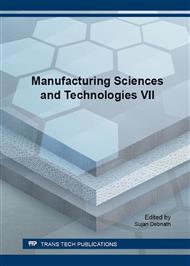p.56
p.61
p.66
p.71
p.77
p.83
p.89
p.103
p.108
Activation Energy of Alkali-Silica Reactionin CFBC Fly Ash Geopolymer Mortars
Abstract:
The utilization of fly ashes produced by circulated fluidized bed combustion (CFBC) has been limited in construction application due to their inherent high sulfate and carbon contents although CFBC fly ash exhibits very good binding properties without requiring any supplementary activator. This study reports alkali silica reaction (ASR) behavior of CFBC fly ash geopolymer mortars in terms of activation energy using a modified ASTM C 1260/C 1567. Two different strengths of NaOH solution were used to test reactive and potentially reactive aggregates in the presence of CFBC fly ash. The other variables included a longer test period of 3 months and three different temperatures, namely 60°C, 70°C, and 80°C. It was observed that there was no significant expansion in CFBC fly ash based geopolymer mortar regardless of variation of temperature and alkalinity of test solution. Activation energy of CFBC fly ash geopolymer for ASR was higher than that of plain cement mortar irrespective of strength of NaOH solution.
Info:
Periodical:
Pages:
77-82
Citation:
Online since:
January 2017
Authors:
Price:
Сopyright:
© 2017 Trans Tech Publications Ltd. All Rights Reserved
Share:
Citation:


